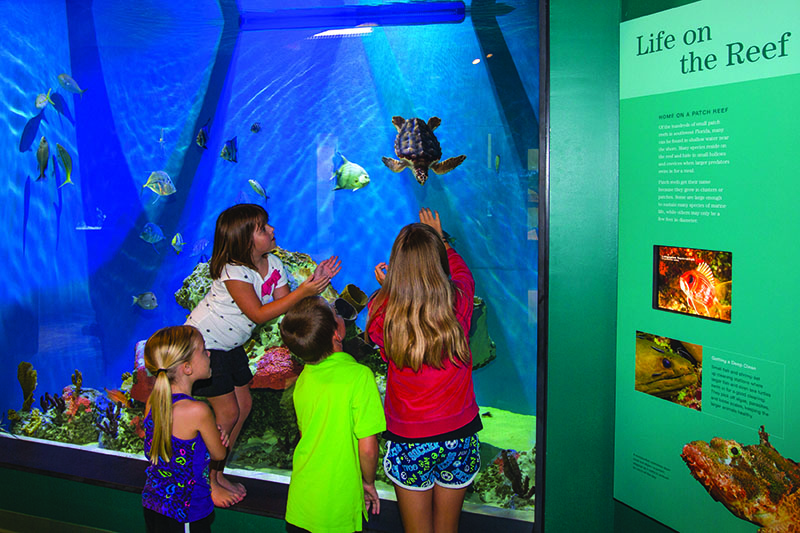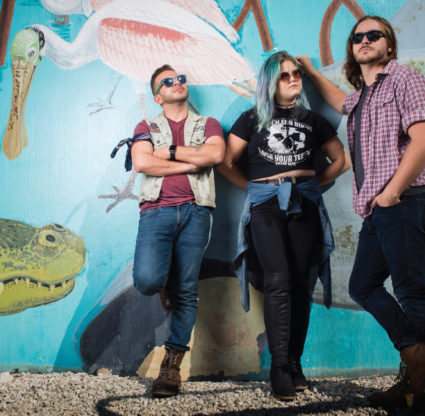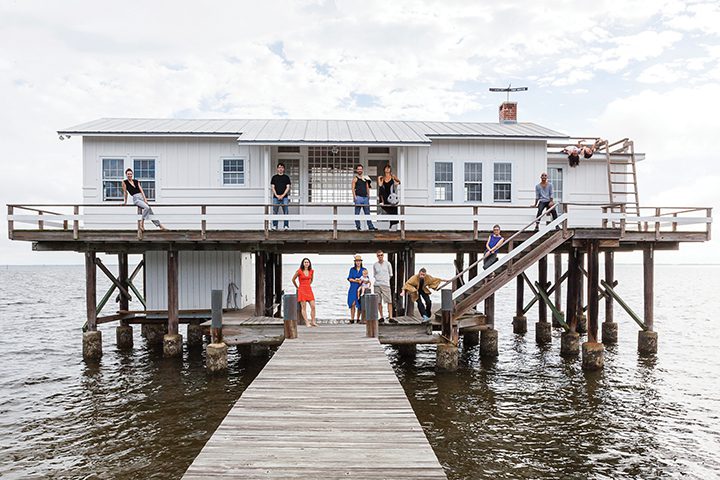They aren’t done building, and won’t be for a little while yet. But after years of being under the wraps of plastic construction fencing, the Conservancy of Southwest Florida is finally ready to come out of its cocoon a beautiful new manatee, err, butterfly. Perhaps a gopher tortoise out of its burrow is a better analogy. Black mangrove filtering out pollution? You get the point.
The organization, which serves both to educate locals and visitors alike on Florida’s ecosystems and to craft policies to protect those habitats, has spent more than five years and in the neighborhood of $25 million updating its campus off Goodlette-Frank Road in Naples. With new classrooms, a visitor’s center, a state-of-the art wildlife clinic, new laboratories, a theater space and more, the campus is finally ready to officially reopen to the public for Earth Day this month (the 20 21).
For people looking to get exposed to the variety and importance of our state’s biodiversity, without booking a very exhaustive tour, there are few resources that can match it. On a tour of the grounds, naturalist Lily Mleczko points out the variety of ways the Conservancy can captivate the minds of the thousands of students who pass through the complex each year..
She shows off the high-tech touch screen map of Florida that tracks how water flows through the state. And the decidedly low-tech but equally effective tool, a seven-foot snake that initially frightens many younger visitors, until she tells them how it helps control the rat population.
“I start by asking them which are more dangerous, snakes or rats,” she says. “Of course, they all say snakes. But then when I tell them that rats carried the plague, maybe they have a different idea.”
For Conservancy CEO Andrew McElwaine, getting the facility ready was really just a step to putting people such as Mleczko in a position to succeed.
“We have to deliver on the top-quality programming that we promised our donors when we were going through the capital campaign,” he says. “These buildings are tools in a tool kit; they can’t be seen as an end. There has got to be a positive experience. We’ve got to perform.
“Can we live up to those expectations? We damn well better.”
One of the areas where McElwaine and his team showed great judgment was in the way they structured the capital campaign to build not only buildings, but also the endowment and to help fund operating costs during the campaign.
“We knew that we were going to be asking a lot from people who might normally give money for program support,” he says. “We had to have that money set aside.”
After all, important environmental issues, such as Everglades restoration, dredging and nutrient runoff , weren’t going to wait around to be dealt with.
But you’ll forgive the staff for taking a bit of a victory lap after working for years in what McElwaine calls “well-loved” facilities. The Conservancy folks are going to enjoy their new digs, which will eventually connect with the Naples Zoo and a greenway project that will create a sort of Naples’ version of Central Park, except with a message of preserving the environment around us.
MUST-SEE OF THE MONTH
Esperanza Spalding at the Phil
ESPERANZA SPALDING IS TOUGH TO label. She’s said her career is modeled on those of Madonna and Ornette Coleman. She’s the closest thing the jazz world has to a mainstream star. She’s got the good looks of a pop star, the bass chops of a 40-year vet of smoky night clubs and the hypnotic voice of a siren.
In the weird world of the Grammys, she was named Best New Artist after the release of her third album, Chamber Music Society, in 2010. Her 2012 release, Radio Music Society, garnered her even more Grammy love and brought her into the rarified air of the Billboard Top 10. Her blend of jazz, neo-soul and South American influences has helped bring jazz to a broader market of young listeners, while being popular with hardcore aficionados. Catch her live at the Phil on April 17. thephil.org.
-JF
EDITOR’S IMPASSIONED PLEA
Keep season alive longer.
IT’S AMAZING HOW QUICKLY THE EVENTS DRY up around here. As we were putting together our monthly Calendar Highlights section (see p. 54), I was stunned at the dearth of things that could genuinely be considered highlights. January through March, we turn away amazing events for lack of space. Come May, we’ll be grasping at straws.
But does it really need to be this way? As a community that aims to take itself a bit more seriously than just another beachside retreat, Southwest Florida sure closes up shop quickly. Once our annual influx of visitors takes flight back north, we seem to forget how to have fun, throw parties, hold concerts, show off art or do anything of much cultural significance. The only theater offerings past May come courtesy of small production companies and the dinner theaters. The Naples Museum of Art closes its doors, as does the Phil as a whole, for a few months.
Have we forgotten the nearly 1 million people who, at last count, call Southwest Florida home year round? We all like to do stuff, too. Yes, we might not have as much money to spend. Sure, we aren’t as likely to buy a $10,000 piece of art or even a $100 concert ticket. But we still want to enjoy our lives. (Man cannot live on SummerJazz on the Gulf alone.)
So, to all the heads of groups out there, I say stay open. Program for us. Experiment on us. Have an idea you’ve really wanted to try but aren’t willing to sacrifice valuable calendar real estate for it in February? Give us a try in June.
By doing things geared toward the people who call Southwest Florida home 52 weeks a year rather than only two, you might just win some loyal patrons.
-JF





